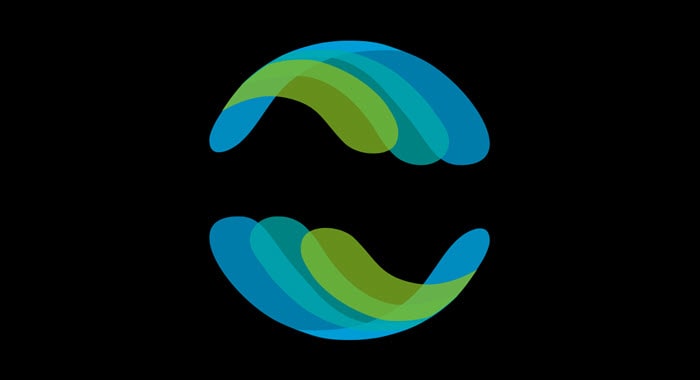Perspectives

The world remade by COVID-19
Recover: Four planning scenarios for business leaders
In the wake of COVID-19, Deloitte and Salesforce hosted a dialogue among some of the world's best-known scenario thinkers to consider the societal and business impact of the pandemic. What might life be like after the crisis passes, and what will it take to thrive in a world remade? Let’s explore four possible scenarios.
The world remade by COVID-19
As COVID-19 spread around the world, Deloitte and Salesforce gathered a group of renowned scenario planners to consider how the pandemic might change business and society.
Scenarios for resilient leaders post-COVID-19
The World Remade by COVID-19 offers a view of how businesses and society may develop over the next three to five years as the world navigates the potential long-term implications of the global pandemic.
Our view is based on scenarios—stories about the future designed to spark insight and spot opportunity—created by some of the world’s best-known scenario thinkers. The collaborative dialogue hosted by Deloitte and Salesforce continues the companies’ tradition of providing foresight and insight that inform resilient leaders:
- Explore how trends we see during the pandemic could shape what the world may look like in the long-term
- Have productive conversations around the lasting implications and impacts of the crisis
- Identify decisions and actions that will improve resilience to the rapidly changing landscape
- Move beyond “recovering” from the crisis, and towards “thriving” in the long run
We are in uncharted waters, yet leaders must take decisive action to ensure their organizations are resilient. We’ve outlined four COVID-19 scenarios for society and business that illustrate different ways we could emerge from the crisis—and what’s required to thrive in a world remade.

A world remade by COVID-19
Health care workers and researchers are on the front lines fighting COVID-19, hoping to slow the spread of the disease and care for the sick. Normal life has stopped for well over a billion people around the world.
While models and predictions abound, no one can say with certainty what the course of the virus will be, much less the impact the pandemic will have on people and societies. Eventually, though, the crisis will end, and life will return to “normal.” But what if it’s not like before? What will have changed as a result of what’s happening now?
The following COVID-19 scenarios for society and business explore the potential impact of the emerging global pandemic. Scenarios are stories about what the future may be like, created through a structured process to stretch thinking, challenge conventional wisdom, and drive better decisions today. They are not predictions about what will happen. They are hypotheses about what could happen, designed to open our eyes to new opportunities or hidden risks.
We have chosen a three-to-five-year time frame, as it offers a window wide enough for significant change to take place but narrow enough for executives to take practical action now to build their organizational resilience.
Making sense of the future | Five fundamental uncertainties that we explored that are likely to have significant impact post-COVID-19
- The overall severity of the pandemic and pattern of disease progression
- The level of collaboration within and between countries
- The health care system response to the crisis
- The economic consequences of the crisis
- The level of social cohesion in response to the crisis
Four planning scenarios for business and society
Four distinct scenarios emerge based on current trends and critical uncertainties. They are summarized below, and more details can be found in the attached PDF:
Scenario one: The passing storm
The COVID-19 pandemic shakes society, but, after a slow start, is met with an increasingly effective health system and political response. The virus is eradicated earlier than expected due to coordinated measures by global players to spread awareness and share best practices. Their competence in the crisis renews trust in public institutions.
Despite being relatively short-lived, the pandemic causes long-term economic impacts. Fiscal and monetary stimulus help blunt the shocks but cannot reverse the losses that small businesses and lower- and middle-income individuals have begun to experience. Tensions sharpen between socioeconomic classes.
What we would need to believe
- Governments effectively communicate the severity of the pandemic and collaborate to share best practices. Society complies with quarantine measures to effectively mitigate the coronavirus spread.
- No indications of a second wave of the virus are identified. Mechanisms to combat the virus (such as immunization) are mobilized and lead to effective prevention and treatments in the long run.
- Economic activity rebounds in late 2020. Recovery is initially slow but speeds up in the second half of 2021 as consumers become more confident.
Please refer to the full scenario in the attached PDF for additional details about this scenario.
Scenario two: Good company
The COVID-19 pandemic persists past initial projections, placing a growing burden on governments around the world that struggle to handle the crisis alone. A surge of public-private sector partnerships emerges as companies step up as part of the global solution. New “pop-up ecosystems” arise as companies across industries partner to respond to critical needs and drive much-needed innovation. Social media companies, platform companies, and tech giants gain new prestige.
Ultimately, companies shift further toward “stakeholder capitalism,” with a more empathetic stance to how they can best serve their customers, shareholders, and employees to rebuild after the crisis.
What we would need to believe
- Businesses take initiative to combat the virus’s spread by supplying health care expertise and enhanced software and tools.
- A shift towards greater corporate responsibility is seen with new long-term outlooks leading to greater emphasis on investing in workers and communities.
- Economic recovery begins late 2021. Recovery slow in early 2022 and speeds up by the second half of 2022.
Please refer to the full scenario in the attached PDF for additional details about this scenario.
Scenario three: Sunrise in the east
The COVID-19 pandemic is severe and unfolds inconsistently across the world. China and other East Asian countries manage the disease more effectively, whereas Western nations struggle with deep and lasting impacts—human, social, and economic—driven by slower and inconsistent responses.
The global center of power shifts decisively east as China and other East Asian nations take the reins as primary powers on the world stage and lead global coordination of the health system and other multilateral institutions. The ability of China, Taiwan, and South Korea to contain the outbreak through strong centralized government response becomes the “gold standard.”
What we would need to believe
- East Asian countries emerge from the recovery period with less economic impact.
- China significantly ramps up foreign direct investment efforts, bolstering its global reputation.
- People accept greater surveillance mechanisms as part of the public good.
- Economic recovery begins late 2021, with notably quicker and more robust recovery in the East.
Please refer to the full scenario in the attached PDF for additional details about this scenario.
Scenario four: Lone wolves
The COVID-19 pandemic becomes a prolonged crisis as waves of disease rock the globe for longer than anyone was prepared for. Mounting deaths, social unrest, and economic freefall become prominent. The invisible enemy is everywhere, and paranoia grows.
Nations put strict controls on foreigners and force supply chains home in the name of local security. Countries grow isolationist in the name of domestic safety. Government surveillance is commonplace, with tech monitors on people and their movements.
What we would need to believe
- The SARS-Cov-2 virus strain which causes COVID-19 disease continues to mutate and evolve, evading eradication.
- Citizens cede freedoms to governments in the name of virus containment.
- Countries deemphasize working together and enforce isolationist policies.
- Governments turn to extreme surveillance and monitoring tools.
- Global economic recovery by mid-2022, with diverging rates of recovery across countries.
Please refer to the full scenario in the attached PDF for additional details about this scenario.
Further reflection in a post-COVID-19 world remade
As you reflect on these COVID-19 scenarios for society and business, consider the following:
- Which scenario best describes the world your organization appears to be preparing for?
- Is there a scenario that your organization is currently ignoring—but shouldn’t be?
- What would you need to do differently in order to win in each of these scenarios?
- What capabilities, partnerships, segments, and workforce strategies do you need to learn more about?
Remember, these scenarios suggest a range of possible outcomes as the COVID-19 crisis evolves. It is too soon to tell which of these or other scenarios will emerge, but resilient leaders are preparing now for what the future may hold.
Project Collaborators
Salesforce |
Other Collaborators |
Deloitte |
Hernán Asorey |
Stewart Brand |
Steven Goldbach |
Ryan Aytay |
Katherine Fulton |
John Henry |
Mick Costigan |
Nils Gilman |
Eamonn Kelly |
Mark Hawkins |
Danny Hillis |
Maximilian Schroeck |
Mathias Herzog |
Kevin Kelly |
Jennifer Steinmann |
Simon Mulcahy |
||
Pablo Quintanilla |
||
Peter Schwartz |




